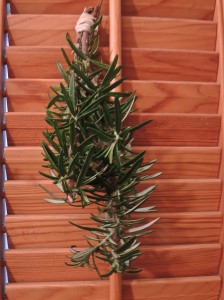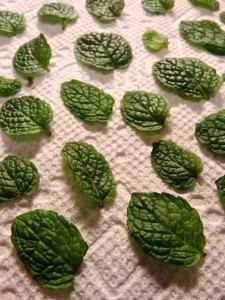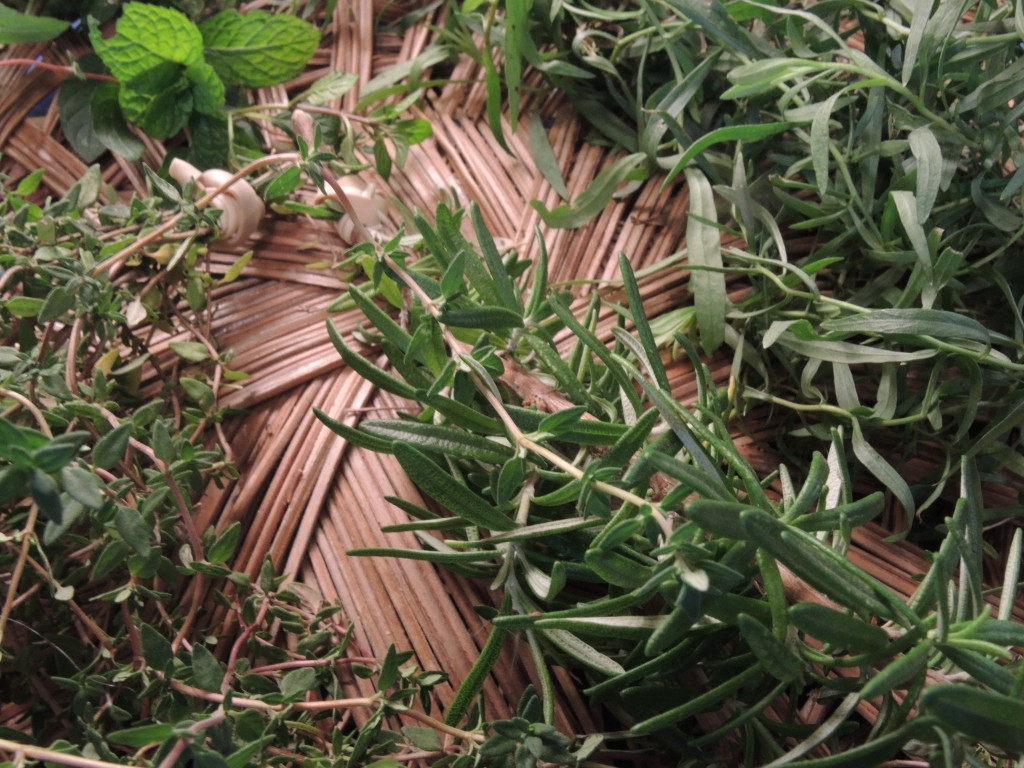As a child, I remember trying to dry basil for the winter. It was an entirely unsatisfactory enterprise, as the basil consistently turned black and tasteless. I never thought I would dry herbs again. But this season, I cannot bear to let these fragrant herbs go to waste, so I decided to opt for hope over experience and give it another shot.
 So far, so good! This time, I went to the website of the National Center for Home Food Preservation and found exactly how to treat a variety of herbs for best results. Those with sturdy leaves (such as rosemary and thyme) can be hung in small bunches to dry. Those with more tender leaves (including tarragon) can also be hung in small bunches, but placed in a paper bag with holes cut in the sides; the sprigs will get airflow that way, but the bag will catch leaves and seeds that fall off.
So far, so good! This time, I went to the website of the National Center for Home Food Preservation and found exactly how to treat a variety of herbs for best results. Those with sturdy leaves (such as rosemary and thyme) can be hung in small bunches to dry. Those with more tender leaves (including tarragon) can also be hung in small bunches, but placed in a paper bag with holes cut in the sides; the sprigs will get airflow that way, but the bag will catch leaves and seeds that fall off.
 My favorite drying method, however, is the one that’s suggested for mint—to remove the leaves and place them individually on a paper towel, then allow them to dry in a very cool oven for 12 hours or so. (Simply turning on the oven light is enough.)
My favorite drying method, however, is the one that’s suggested for mint—to remove the leaves and place them individually on a paper towel, then allow them to dry in a very cool oven for 12 hours or so. (Simply turning on the oven light is enough.)
Now, while my rosemary, tarragon, and thyme are air drying, I already have a lovely batch of dried mint to crumble into my vanilla yogurt in the morning—and the air in the apartment is deliciously fragrant. Fingers crossed for good results with the others!

But here’s a mystery. What happened to this little inchworm that was in my mint? I only spotted him for a few seconds before he disappeared. I’m not even certain what he is, but my guess is that he’s the caterpillar of a crocus geometer moth, which uses mint as a host plant. Sorry to disturb you, little fellow.
